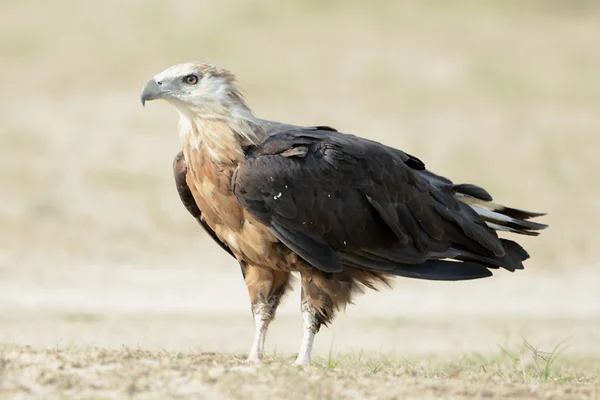Recently, after a decade, the Pallas fish eagle was observed in Chilika during a bird census.
About Pallas Fish Eagle:
- Scientifically known as Haliaeetus leucoryphus, Pallas’s fish eagle is a large, brownish sea eagle.
- It inhabits a wide range from Kazakhstan to Bhutan, including India, China, and several other Asian countries.
Description:
- Adults have a light sandy-brown hood, whitish face, darker brown wings, and a rufous back.
- Recognizable by its long, slender wings and a distinctive white stripe on its black tail.
- Juveniles are darker with no tail band and obtain adult plumage by the 4th year.
Taxonomy and Evolution:
- First described in 1771, Pallas’s fish eagle’s phylogenetic place among sea eagles remains unclear.
- Retains ancestral traits like dark eyes, bill, and talons.
- Its unique distribution and characteristics indicate a fairly independent evolutionary path.
Behaviour and Ecology:
- Diet primarily consists of large freshwater fish, but it’s known to be opportunistic, preying on birds, mammals, reptiles, and even carrion.
- Notable for its ability to attack and lift heavy prey, including adult water birds.
- Dominates other raptors in its habitat, occupying high perches and having significant daily food intake.
Distribution and Habitat:
- Spans across various Asian countries, found near freshwater sources.
- Prefers habitats with abundant fish and suitable nesting sites.
Threats:
- Habitat degradation,
- Pollution,
- Human persecution, and
- Disruption of food sources.
Conservation Status:
- IUCN Red List: Endangered
Ref: Source
| UPSC IAS Preparation Resources | |
| Current Affairs Analysis | Topperspedia |
| GS Shots | Simply Explained |
| Daily Flash Cards | Daily Quiz |



